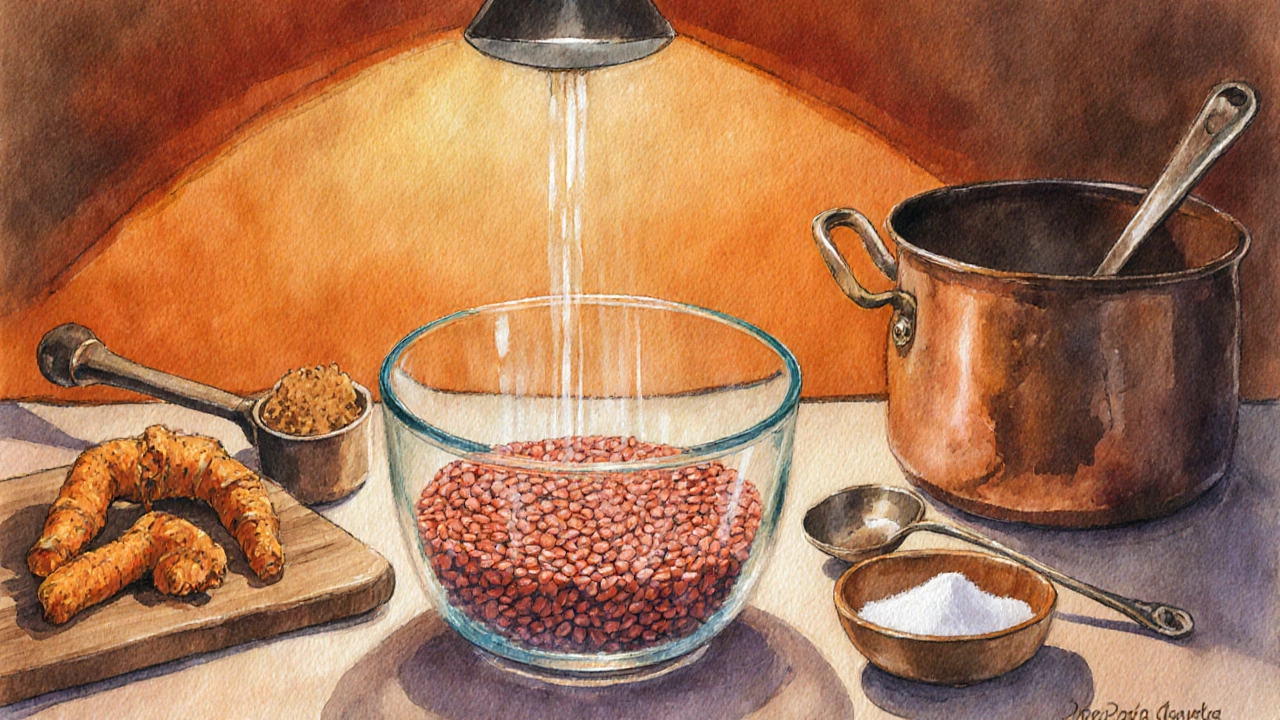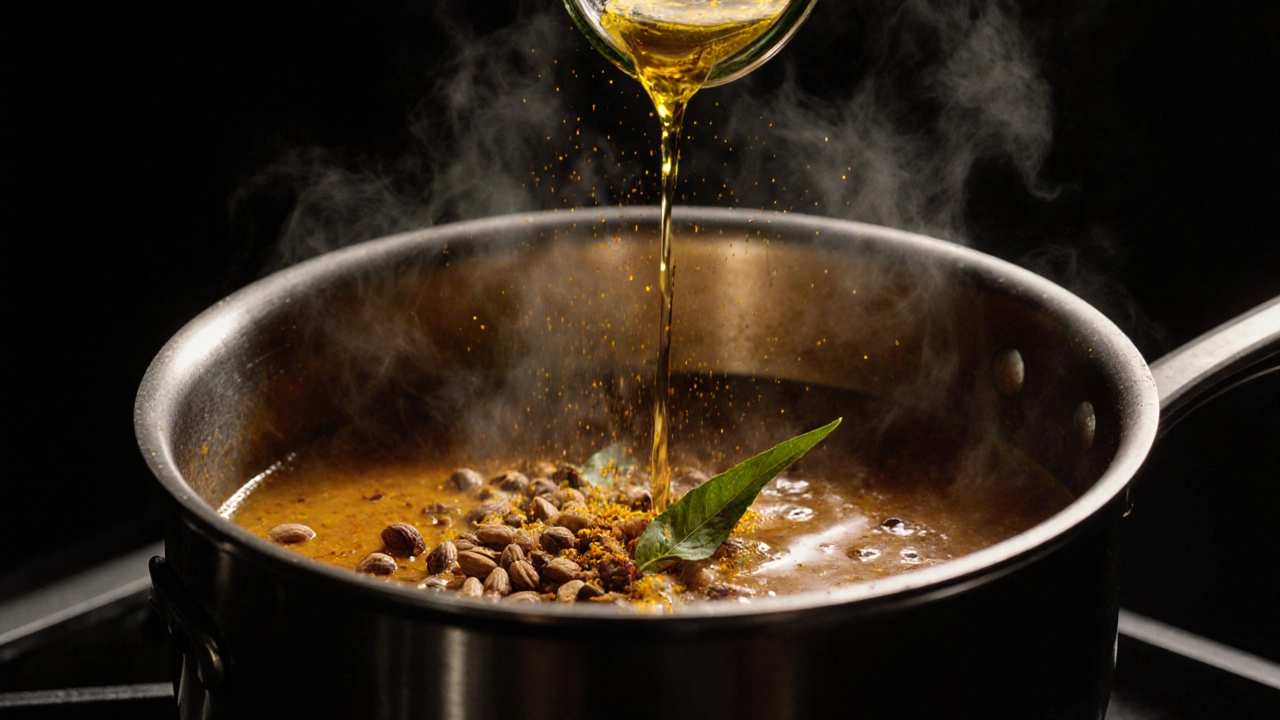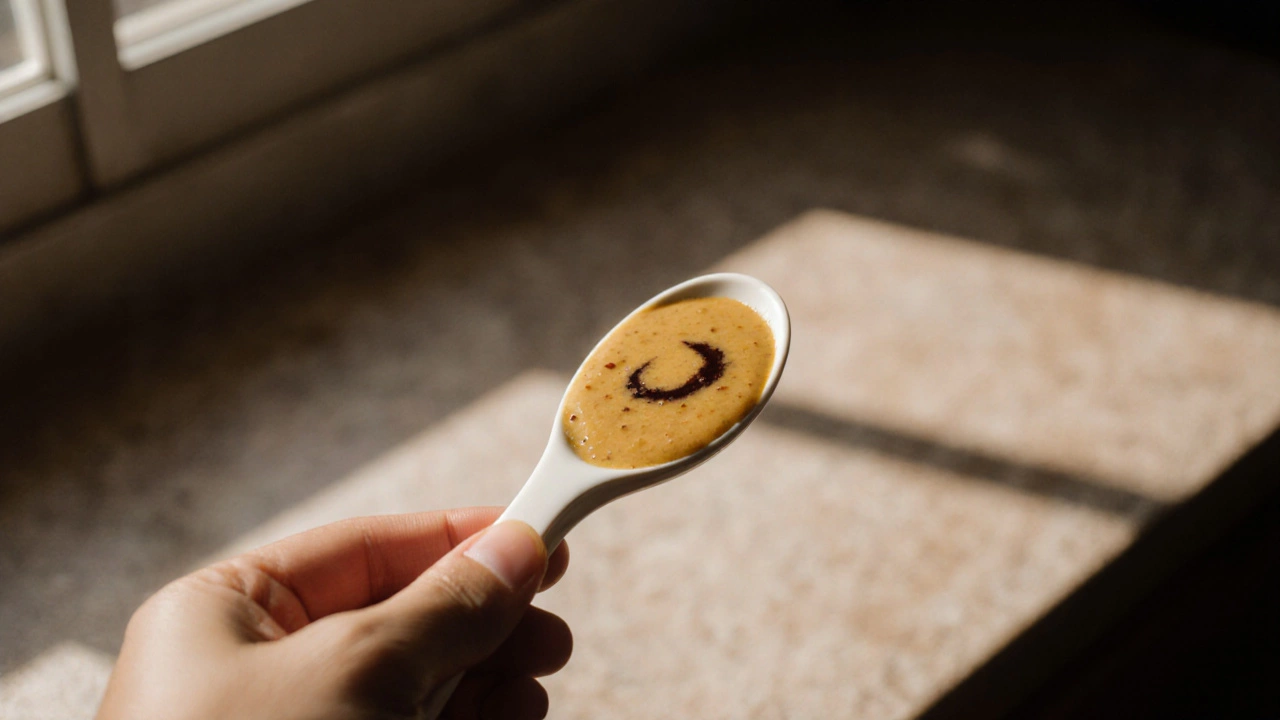Dal Bitterness Prevention & Fixer
Select your cooking practices above and click "Analyze & Suggest Fixes" to get personalized tips.
Ever taken a spoonful of dal and been hit with an unexpected bitter punch? That sharp, unpleasant note can ruin even the most carefully planned meal. Below you’ll find the science behind why dal goes bitter, practical steps to stop it before it happens, and quick rescue tricks when you’re already stuck with a bitter batch.
Quick Takeaways
- Hard water, over‑soaking, and burnt spices are the top culprits.
- Rinse lentils, add a pinch of baking soda, and use fresh aromatics to keep flavor clean.
- If dal turns bitter after cooking, a splash of acid or a touch of sugar can balance it out.
- Proper tempering (tadka) with asafoetida and turmeric prevents bitterness from developing.
- Keep a short checklist handy to diagnose and fix bitter dal fast.
Dal is a protein‑rich dish made from various types of lentils, peas, or beans that are boiled until soft and then seasoned. Its mild, earthy flavor makes it a staple across South Asia, but the delicate balance can be upset by a few easy‑to‑miss details.
What Actually Makes Dal Bitter?
Bitterness isn’t a single flaw; it’s a collection of chemical reactions that happen at different stages. Here are the most common sources:
- Hard water: Calcium and magnesium ions can interact with the polyphenols in lentils, releasing a bitter taste.
- Old or Lentils that have been stored for months may develop off‑flavors.
- Over‑soaking or soaking in warm water can cause the beans to release tannins, which are naturally bitter.
- Burnt or over‑fried aromatics - especially turmeric and asafoetida - generate bitter compounds.
- Using a pressure cooker without proper venting can trap steam, leading to uneven cooking and a bitter edge.
- Adding salt too early can toughen the skins, causing the lentils to crack and release bitter saps.
- Acidic ingredients (tomatoes, tamarind) added before the lentils are fully cooked can halt gelatinisation, leaving a gritty, bitter mouthfeel.
Preventing Bitterness Before You Cook
There’s no reason to let a perfect batch go sour. Follow these pre‑cook habits:
- Rinse and sort: Put the lentils in a bowl, discard stones or discolored pieces, then rinse under cool running water until the water runs clear.
- Soak wisely: If you soak, use cold water for no more than 30minutes. Longer soaks are okay if you change the water halfway.
- Adjust water hardness: For hard tap water, add a pinch (about ¼tsp per litre) of baking soda. It softens the water and neutralises tannins.
- Use fresh spices: Fresh turmeric and a tiny crumble of asafoetida (hing) smell sweet, not stale. Store them in airtight jars away from light.
- Mind the pot: If you use a pressure cooker, start with a low‑pressure setting and release steam gradually. For a regular pot, bring to a gentle boil, then simmer uncovered.

Rescuing Bitter Dal After It’s Cooked
Sometimes the bitterness sneaks in despite your best effort. Here are quick fixes you can try on the spot:
- Acid balance: Stir in a tablespoon of lemon juice, tamarind pulp, or a splash of vinegar. The acid cuts through bitterness.
- Sweeten slightly: Add a teaspoon of jaggery, honey, or a pinch of sugar. Sweetness masks bitterness without making the dal sugary.
- Temper again: Heat a little oil, fry fresh turmeric, asafoetida, cumin, and a few curry leaves. Pour the hot tadka over the dal and mix.
- Dilute and enrich: Add extra cooked, bland lentils or a splash of coconut milk. More volume reduces the concentration of bitter compounds.
- Simmer with potatoes: Drop a peeled, raw potato into the pot and simmer for 10minutes. The potato absorbs some of the bitter flavors; discard it before serving.
The Role of Water Quality and Additives
Hard water is often the silent offender. When calcium binds with phytates in lentils, it releases a bitter taste that’s hard to mask. Here’s how to test and treat it:
- Fill a clear glass with tap water, add a few drops of liquid soap, and shake. If the water forms a thick, milky film, it’s hard.
- For consistent results, switch to filtered or bottled water for cooking dal.
- If you must use hard water, the baking soda trick mentioned earlier is the cheapest solution.
- Some chefs swear by a pinch of kasundi (mustard oil) because its natural fatty acids coat the lentils, reducing the bitterness perception.
Temperings (Tadka) that Prevent Bitterness
A good tempering does more than add flavor - it stabilises the dal’s pH and neutralises unwanted compounds. Here’s a fail‑proof recipe:
- Heat 2tablespoons of ghee or neutral oil in a small pan.
- Add ½tsp cumin seeds; let them sputter for 5seconds.
- Drop a pinch of asafoetida and ¼tsp turmeric. Stir for 10seconds - you’ll see a bright golden hue, not a dark brown.
- Add 1‑2 dried red chilies and a few curry leaves; cook briefly.
- Pour the hot tadka over the cooked dal, cover for a minute, then stir.
This quick step repairs any mild bitterness that may have formed during simmering.

Common Mistakes and How to Avoid Them
| What Went Wrong | How to Fix It |
|---|---|
| Using old lentils | Buy fresh stock; discard any that smell sour. |
| Burning spices | Fry over medium heat; remove from pan as soon as fragrant. |
| Adding salt early | Season halfway through cooking, after lentils soften. |
| Cooking with hard water | Switch to filtered water or add baking soda. |
| Over‑cooking in pressure cooker | Use low pressure; release steam slowly. |
Quick Checklist: Keep Your Dal Bitter‑Free
- Rinse & sort lentils.
- Soak short, cold, and change water once.
- Use fresh turmeric & asafoetida.
- Add a pinch of baking soda if water is hard.
- Season after lentils are tender.
- Temper with ghee, cumin, turmeric, and hing.
- Finish with a splash of acid or a pinch of sweetener if needed.
Frequently Asked Questions
Why does my dal taste metallic?
Metallic notes usually mean the water is high in iron or the pot is reactive (like unlined aluminum). Switch to stainless steel cookware and use filtered water.
Can I prevent bitterness by adding yogurt?
Yogurt adds creaminess but it won’t stop bitter compounds from forming. Use it as a topping after you’ve fixed the flavor.
Is it safe to eat dal that’s slightly bitter?
A mild bitterness is usually harmless, but it signals that the taste balance is off. Adjust with acid or sweetener, or simply cook a fresh batch.
What type of lentil is least likely to turn bitter?
Red split lentils (masoor dal) have lower polyphenol content, so they’re less prone to bitterness compared to green mung or brown urad.
Can I fix bitter dal without adding extra ingredients?
Yes. Simmer the dal longer with a splash of water and a fresh tempering; the extended cooking can break down some bitter compounds.
